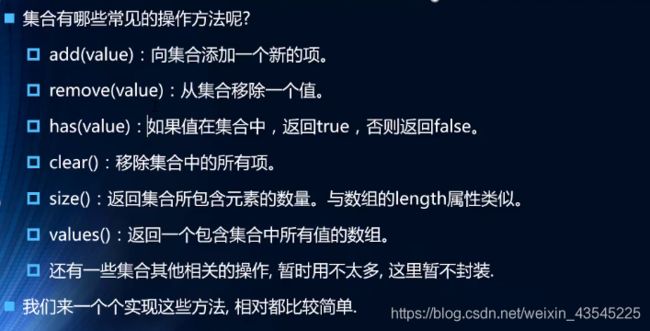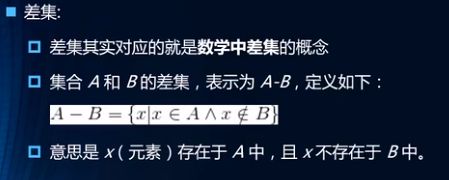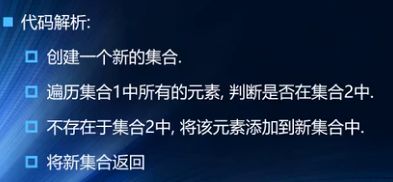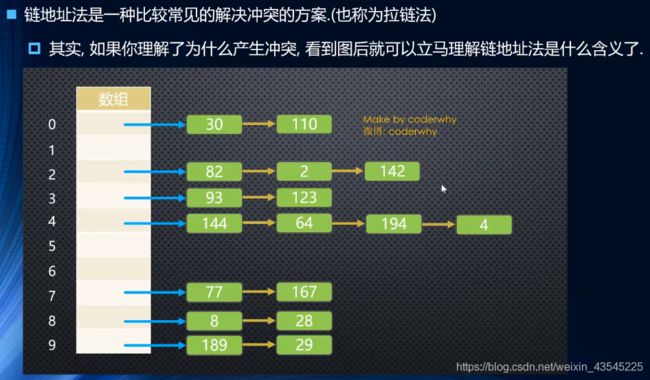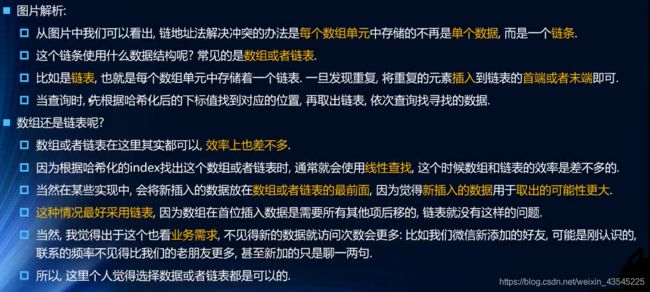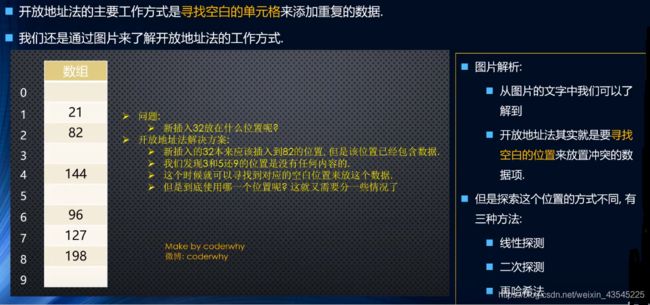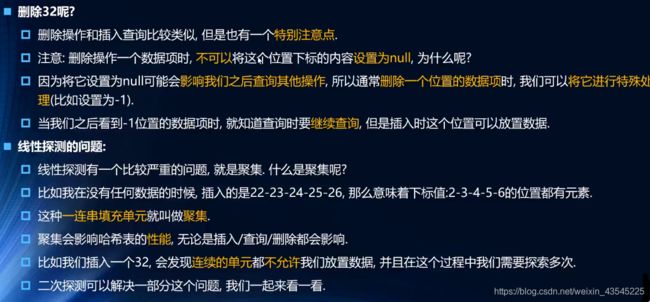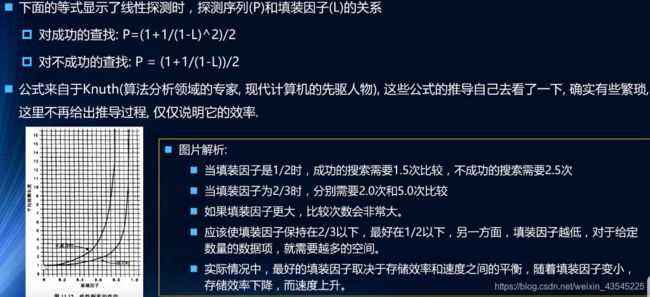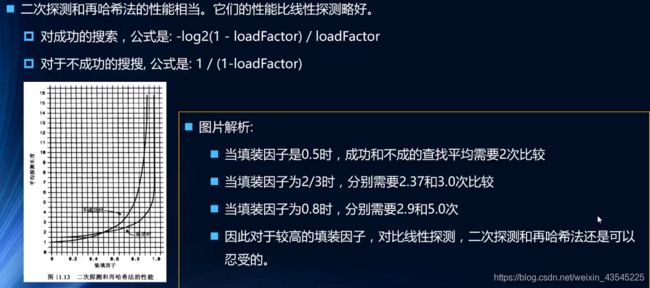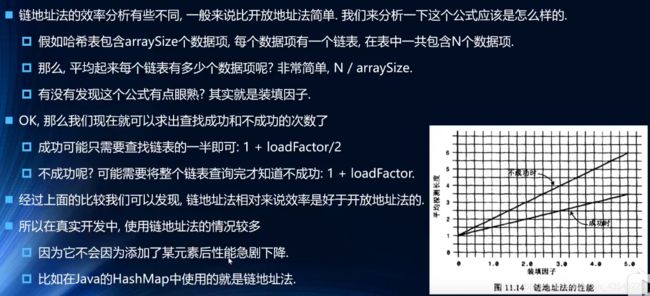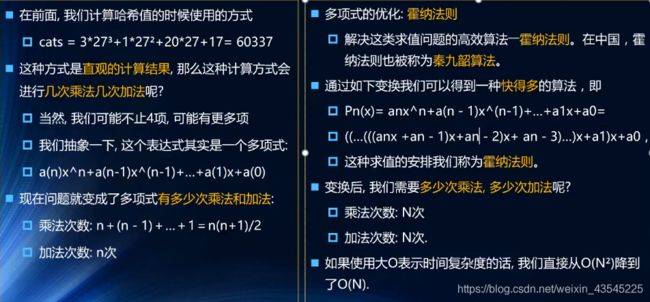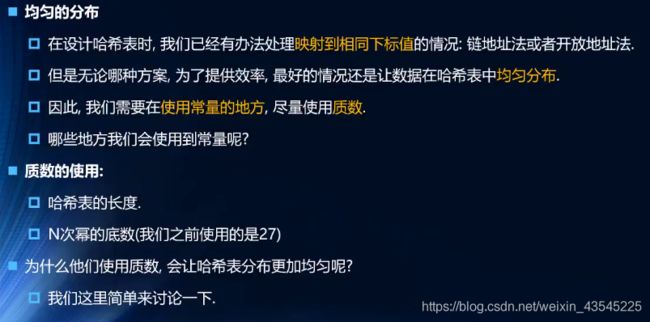JavaScript实现数据结构与算法(三)哈希表
JavaScript实现数据结构与算法(三)哈希表
-
- (三)哈希表
-
- 1. 集合
-
- 1.1 集合的特点
- 1.2 JavaScript的封装方法
- 1.3 集合常见操作
- 1.4 集合的封装常见操作的代码实现
- 1.5 集合间的操作
-
- 1.5.1 并集
- 1.5.2 交集
- 1.5.3 差集
- 1.5.4 子集
- 2. 字典
-
- 2.1 字典的特点
- 2.2 字典和其他数据结构的关系
-
- 2.2.1 字典与映射
- 2.2.2 字典与数组
- 2.2.2 字典与对象
- 3. 哈希表
-
- 3.1 优势
-
- 3.1.1 数组的劣势
- 3.1.2 哈希表的优势
- 3.1.3哈希表的不足
- 3.2 相关概念
-
- 3.2.1 哈希化
- 3.2.2 哈希函数
- 3.2.3 哈希表
- 3.3 解决哈希冲突的方法
-
- 3.3.1 链地址法
- 3.3.2 开放地址法
-
- 3.3.2.1 线性探测法
- 3.3.2.2 二次探测法
- 3.3.2.3 再哈希法
- 3.4 哈希化的效率
-
- 3.4.1 装填因子
- 3.4.2 装填因子与探测序列之间的关系
- 3.5 优秀的哈希函数
-
- 3.5.1 特点
- 3.5.2 优化方法
- 3.6 代码实现
-
- 3.6.1 哈希函数的实现
- 3.6.2 创建哈希表
- 3.6.3 哈希表的操作
- 3.6.4 哈希表的扩容
(三)哈希表
学习笔记:coderwhy的JavaScript实现数据结构与算法的课程
其他章节笔记链接
1. 重要性
2. 线性结构
3. 哈希表【本文】
4. 树结构
5. 图结构
6. 排序和搜索
1. 集合
1.1 集合的特点
1.2 JavaScript的封装方法
1.3 集合常见操作
1.4 集合的封装常见操作的代码实现
<!DOCTYPE html>
<html lang="en">
<head>
<meta charset="UTF-8">
<title>封装集合</title>
</head>
<body>
<script>
// 封装集合类
function Set() {
// 属性
this.items = {} // 使用了js的object对象
// 方法
// add 方法
Set.prototype.add = function (value) {
// 判断集合中是否已经包含了该元素
if(this.has(value)){
return false; // 添加失败
}else {
// 将元素添加到集合中
this.items[value] = value; // 这里是把属性和属性值都设置为要添加的元素
return true;
}
} ;
// has方法
Set.prototype.has = function (value) {
return this.items.hasOwnProperty(value);
};
// remove方法
Set.prototype.remove = function (value) {
// 1. 该集合中是否包含该元素
if(!this.has(value)){
return false;
}else{
// 2. 将元素从属性中删除
delete this.items[value];
return true;
};
};
// clear 方法
Set.prototype.clear = function () {
this.items = {}
};
// size方法
Set.prototype.size = function () {
return Object.keys(this.items).length;
};
// 获取集合中所有的值
Set.prototype.values = function () {
return Object.keys(this.items); // 获取object中的所有key
}
};
// 测试Set类
// 1. 创建Set类对象
var set = new Set();
// 2. 添加元素
alert(set.add('abc'));
alert(set.add('abc'));
alert(set.add('cba'));
alert(set.add('nba'));
alert(set.add('mba'));
alert(set.values());
// 3. 删除元素
alert(set.remove('mba'));
alert(set.remove('mba'));
alert(set.values());
// 4. has方法
alert(set.has('abc'));
alert(set.has('aaabc'));
// 5. 获取元素的个数
alert(set.size());
// 6. clear 方法
set.clear();
alert(set.size());
</script>
</body>
</html>
1.5 集合间的操作
1.5.1 并集
// 并集
Set.prototype.union = function (otherSet) {
// this:集合对象A
// otherSet: 集合对象B
// 1. 创建新的集合
var unionSet = new Set();
// 2. 将A集合中的所有元素添加到新集合中
var values = this.values();
for (var i = 0; i < values.length; i++){
unionSet.add(values[i]);
};
// 3. 取出B集合中的元素,判断是否需要加到新集合
values = otherSet.values();
for (var i = 0; i < values.length; i++){
unionSet.add(values[i]);
};
return unionSet;
};
1.5.2 交集
// 交集
Set.prototype.intersection = function (otherSet) {
// this:集合对象A
// otherSet: 集合对象B
// 1. 创建新的集合
var interSet = new Set();
// 2, 从A中取出一个个元素,判断是否同时存在于集合B中,存在放入新集合中
var values = this.values();
for (var i = 0; i < values.length; i++){
var item = values[i];
if (otherSet.has(item)){
interSet.add(item);
}
};
return interSet;
};
1.5.3 差集
(3)代码实现
// 差集
Set.prototype.difference = function (otherSet) {
// this:集合对象A
// otherSet: 集合对象B
// 1. 创建新的集合
var differSet = new Set();
// 2, 从A中取出一个个元素,判断是否不存在于集合B中,存在放入新集合中
var values = this.values();
for (var i = 0; i < values.length; i++){
var item = values[i];
if (!otherSet.has(item)){
differSet.add(item);
}
};
return differSet;
}
1.5.4 子集
(3)代码实现
// 子集
Set.prototype.subset = function (otherSet) {
// this:集合对象A
// otherSet: 集合对象B
// 判断集合A是不是集合B的子集
// 遍历集合A中所有的元素,如果发现,集合A中的元素,在集合B中不存在,那么false
// 如果遍历完成整个集合,依然没有返回false,那么返回true即可
var values = this.values();
for (var i = 0; i < values.length; i++){
var item = values[i];
if (!otherSet.has(item)){
return false;
}
};
return true;
};
2. 字典
2.1 字典的特点
2.2 字典和其他数据结构的关系
2.2.1 字典与映射
2.2.2 字典与数组
![]()
2.2.2 字典与对象
3. 哈希表
是基于数组实现的,但是比起数组又有自己的优势
3.1 优势
3.1.1 数组的劣势
(1)数组进行插入操作时,效率比较低
(2)数组进行查找操作的效率
1)若是基于索引进行查找效率非常高
2)若是基于内存去查找(比如name=‘why’),效率非常低
(3)数组进行删除操作,效率也不高。
3.1.2 哈希表的优势
3.1.3哈希表的不足
3.2 相关概念
3.2.1 哈希化
将大数字转化成数组范围内的下标的过程。
3.2.2 哈希函数
将单词转化成大数字,大数字在进行哈希化的代码实现放在一个函数中,这个函数称之为哈希函数。
3.2.3 哈希表
最终将数据插入到的这个数组,对整个结构的封装, 称之为一个哈希表。
3.3 解决哈希冲突的方法
3.3.1 链地址法
3.3.2 开放地址法
3.3.2.1 线性探测法
3.3.2.2 二次探测法
3.3.2.3 再哈希法
3.4 哈希化的效率
3.4.1 装填因子
3.4.2 装填因子与探测序列之间的关系
3.5 优秀的哈希函数
3.5.1 特点
3.5.2 优化方法
3.6 代码实现
3.6.1 哈希函数的实现
// 设计哈希函数
// 1. 将字符串转换成比较大的数字:hasCode
// 2. 将大的数字hasCode压缩到数组范围之内
function hashFunc(str,size){
// 1. 定义hasCode变量
var hasCode = 0;
// 2. 霍纳算法,来计算hasCode的值
// cats -> Unicode编码
for (var i = 0; i < str.length; i++){
hasCode = 37 * hasCode + str.charCodeAt(i);
};
// 3. 取余操作
var index = hasCode % size;
return index;
}
// 测试哈希函数
alert(hashFunc('abc',7)); // 4
alert(hashFunc('cba',7)); // 3
alert(hashFunc('nba',7)); // 5
alert(hashFunc('mba',7)); // 1
3.6.2 创建哈希表
3.6.3 哈希表的操作
<!DOCTYPE html>
<html lang="en">
<head>
<meta charset="UTF-8">
<title>哈希表实现</title>
</head>
<body>
<script>
// 封装哈希表类
function HashTable() {
// 属性
this.storage = []; // 所有元素的都是放到这个数组中
this.count = 0; // 记录哈希表当前存放的数字个数,用来计算装载因子(loadFactor)
// loadFactor > 0.75 需要对数组进行扩容
// loadFactor < 0.25 需要对数组进行缩小
this.limit = 0 ; // 用于记录数组的长度
// 方法
// 哈希函数
HashTable.prototype.hashFunc = function(str,size){
// 1. 定义hasCode变量
var hasCode = 0;
// 2. 霍纳算法,来计算hasCode的值
// cats -> Unicode编码
for (var i = 0; i < str.length; i++){
hasCode = 37 * hasCode + str.charCodeAt(i);
};
// 3. 取余操作
var index = hasCode % size;
return index;
};
// 插入&修改操作
HashTable.prototype.put = function (key,value) {
// 1. 根据key获取对应的index
var index = this.hashFunc(key,this.limit);
// 2. 根据index取出对应的bucket
var bucket = this.storage[index];
// 3. 判断该bucket还是否为null
if (bucket == null){
bucket = [];
this.storage[index] = bucket;
};
// 4. 判断是否是修改数据
for (var i = 0; i < bucket.length; i++){
var tuple = bucket[i];
if(tuple[0] == key){
tuple[1] = value;
return
};
};
// 5. 进行添加操作
bucket.push([key,value]);
this.count += 1;
};
// 获取操作
HashTable.prototype.get = function (key) {
// 1. 根据key获取对应的index
var index = this.hashFunc(key,this.limit);
// 2. 根据index取出对应的bucket
var bucket = this.storage[index];
// 3. 判断该bucket还是否为null
if (bucket == null){
return null;
};
// 4. 有bucket,那么就进行线性查找
for (var i = 0; i < bucket.length; i++){
var tuple = bucket[i];
if(tuple[0] == key){
return tuple[1];
};
};
// 5. 依然没有找到, 那么返回null
return null;
};
// 删除操作
HashTable.prototype.remove = function (key) {
// 1. 根据key获取对应的index
var index = this.hashFunc(key,this.limit);
// 2. 根据index取出对应的bucket
var bucket = this.storage[index];
// 3. 判断该bucket还是否为null
if (bucket == null){
return null;
};
// 4. 有bucket,那么就进行线性查找,并且删除
for (var i = 0; i < bucket.length; i++){
var tuple = bucket[i];
if(tuple[0] == key){
bucket.splice(i,1);
this.count--;
return tuple[1];
};
};
// 5. 依然没有找到, 那么返回null
return null;
};
// 其他方法
// 判断哈希表是否为空
HashTable.prototype.isEmpty = function (){
return this.count == 0;
};
// 获取哈希表中元素的个数
HashTable.prototype.size = function (){
return this.count ;
};
}
// 测试哈希表
// 1. 创建哈希表
var ht = new HashTable();
// 2. 插入数据
ht.put('abc','123');
ht.put('cba','321');
ht.put('nba','521');
ht.put('mba','520');
// 3. 获取数据
alert(ht.get('abc'));
// 4. 修改方法
ht.put('abc','111');
alert(ht.get('abc'));
// 5. 删除方法
ht.remove('abc');
alert(ht.get('abc'));
</script>
</body>
</html>
3.6.4 哈希表的扩容
(2) 扩容的方法

(3) 什么情况下进行扩容

(4)代码实现
// 哈希表的扩容/缩容
HashTable.prototype.resize = function (newLimit) {
// 1. 保存旧的数组内容
var oldStorage = this.storage;
// 2. 重置所有的属性
this.storage = [];
this.count = 0;
this.limit = newLimit;
// 3. 遍历oldStorage中所有的bucket
for (var i = 0; i < oldStorage.length; i++){
// 3.1 取出对应的
var bucket = oldStorage[i];
// 3.2 判断bucket是否为null
if (bucket == null){
continue;
}
// 3.3 bucket中有数据,那么取出数据,重新插入
for (var j = 0 ;j <bucket.length; j++){
var tuple = bucket[j];
this.put(tuple[0],tuple[1]);
}
};
}
—————————————————————————————————————————
如果我的文章能帮你节约20秒,就请你为我的文章点个赞吧!



